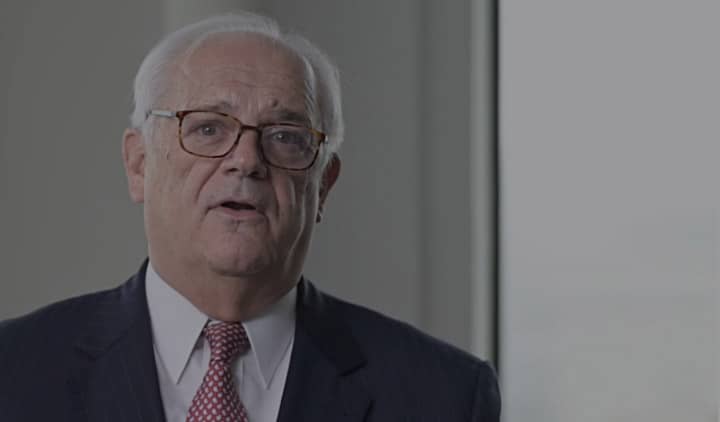Following Governor Newsom’s demand that efforts be redoubled to bring the PG&E bankruptcy to an end through a negotiated or mediated settlement, the Walkup fire litigation team headed by Mike Kelly, Khaldoun Baghdadi, Andrew McDevitt and Max Schuver has been working diligently with the Official Committee of Tort Claimants in the Bankruptcy litigation to find a path out of Bankruptcy so that fire victims can be paid, helping them rebuild their lives. A major stumbling block to resolution has been an unfair deal struck between PG&E and insurance companies that unfairly treats insurance companies better than homeless victims and depletes the cash available for victims to rebuild. This fact has not been lost on the financial world, as evidenced by this article in the November 8, 2019 Wall Street Journal: “PG&E Plan to Pay Insurance Claims in Cash Hurts Bankruptcy Talks: An $11 billion cash payout would push victims to take stock deal”
“PG&E Plan to Pay Insurance Claims in Cash Hurts Bankruptcy Talks: An $11 billion cash payout would push victims to take stock deal”
As published in Wall Street Journal
By Andrew Scurria, Peg Brickley and Erin Ailworth
An $11 billion settlement of insurance claims tied to PG&E Corp. ’s alleged responsibility for California wildfires is emerging as an impediment to a potentially broader deal to end the utility’s bankruptcy, according to people familiar with the matter.
The proposed payoff to hedge funds and insurance companies is coming under pressure as victims of the wildfires bargain for better treatment by PG&E, the people said.
In September, the company signed a settlement proposal that would pay $11 billion in cash compensation for what insurers paid out for damages caused by wildfires linked to PG&E equipment.
If approved by the court overseeing PG&E’s bankruptcy, the deal could tie up much of the free cash the company will have as it exits bankruptcy. Some of the cash would go to insurance carriers themselves, repaying insured losses stemming from the wildfires. Much of it would go to hedge funds that bought insurers’ claims against PG&E at discounts, usually paying less than 50% of the face value.
And, people who lost homes and loved ones to blazes that have been linked to the utility’s aged equipment are more likely to receive shares in the restructured company as compensation, rather than cash.
That prospect is not sitting well with lawyers for fire victims, who already are being pressured to take less than the $54 billion they believe their clients are owed. Market participants are also questioning whether PG&E can afford to stick with the cash payout for claims when the utility may be swamped with yet more wildfire damages.
The clash between fire victims and insurance companies moved into the open Friday, when the official committee representing victims filed court papers challenging the proposed settlement and asking the bankruptcy judge to decide whether the two groups of creditors are on equal footing in the bankruptcy case. Fire victims say that, by law, they should be paid before the insurance companies.
“It is time to call this settlement what it is: a mistake,” lawyers for the fire victims wrote. “The debtors have given away all their cash and placed the wildfire victims in a position of full risk in this case.”
Prices on insurance claims climbed after the insurance settlement but have since softened. The market now believes the insurance settlement, which requires court approval, is at “a high degree of risk of becoming unsustainable,” said Vladimir Jelisavcic of claims-trading platform Cherokee Acquisition.
Insurers and investors that bought insurance claims are acting as a group in the bankruptcy case, advocating for approval of the settlement. Friday, a spokesman for the group issued a statement saying they had “made the largest concession of any creditor group in the PG&E bankruptcy cases to date. By agreeing to nearly halve our recovery on our claims against PG&E arising from billions of dollars of insurance claims paid to California wildfire victims, the group has been a major facilitator of a comprehensive solution.”
Fire victims, bondholders, PG&E and its owners are negotiating behind closed doors under the supervision of a mediator who is pushing for a broad consensus on the best way forward.
PG&E’s opening offer to fire victims is $8.4 billion, an amount that includes $7.5 billion for individual wildfire claimants, and $900 million for emergency services providers. A rival chapter 11 exit strategy put forth by bondholders and wildfire victims themselves, provides for fire damage payments of $13.5 billion, with payment in stock and cash.
In a regulatory filing on Thursday, PG&E acknowledged that settlement talks may result in a revised plan that offers fire victims an amount closer to the $13.5 billion bondholders are offering.
The sticking point in negotiations is the form of payment, according to people with knowledge of the talks.
The company has said the insurance settlement represents a recovery of about 55% on insurance claims. Critics of the deal disagree, and are pointing to payout figures that indicate insurers, and investors that bought insurance claims at a discount, are in for a relative windfall if the settlement is approved.
With holdings of more than $6 billion, Seth Klarman’s Baupost Group is the largest holder of insurance claims. The Boston hedge fund is also one of PG&E’s largest shareholders, owning 24.5 million shares.
It’s not known how much Baupost paid, but the data available indicate the hedge fund could make hundreds of millions of dollars in profit from its PG&E insurance claims, more than enough to offset the losses it has taken on the utility’s flagging stock.
In March, when Baupost reported its holdings in court filings, its stake in PG&E’s stock was worth nearly $467 million. At Thursday’s closing price, Baupost’s stock in PG&E was worth less than $147.5 million.
Baupost declined to comment on the insurance settlement. Judge Dennis Montali is scheduled to hold a hearing on it next week in the U.S. Bankruptcy Court in San Francisco.
The insurance settlement has been controversial from the start. Wildfire claimants argued it is unwise for PG&E to bind itself to an $11 billion cash payout without knowing what the full amount of damages stemming from the blazes will be.
Baupost has said in court papers the proposal helps wildfire claimants and would guard against PG&E’s insolvency by nearly halving a potential $20 billion insurance claim.
Failure to get to a chapter 11 plan agreement with wildfire claimants could be disastrous for PG&E, which faces a June 30, 2020, deadline to exit bankruptcy if it wants to participate in a state wildfire fund that would cushion it against future losses.


